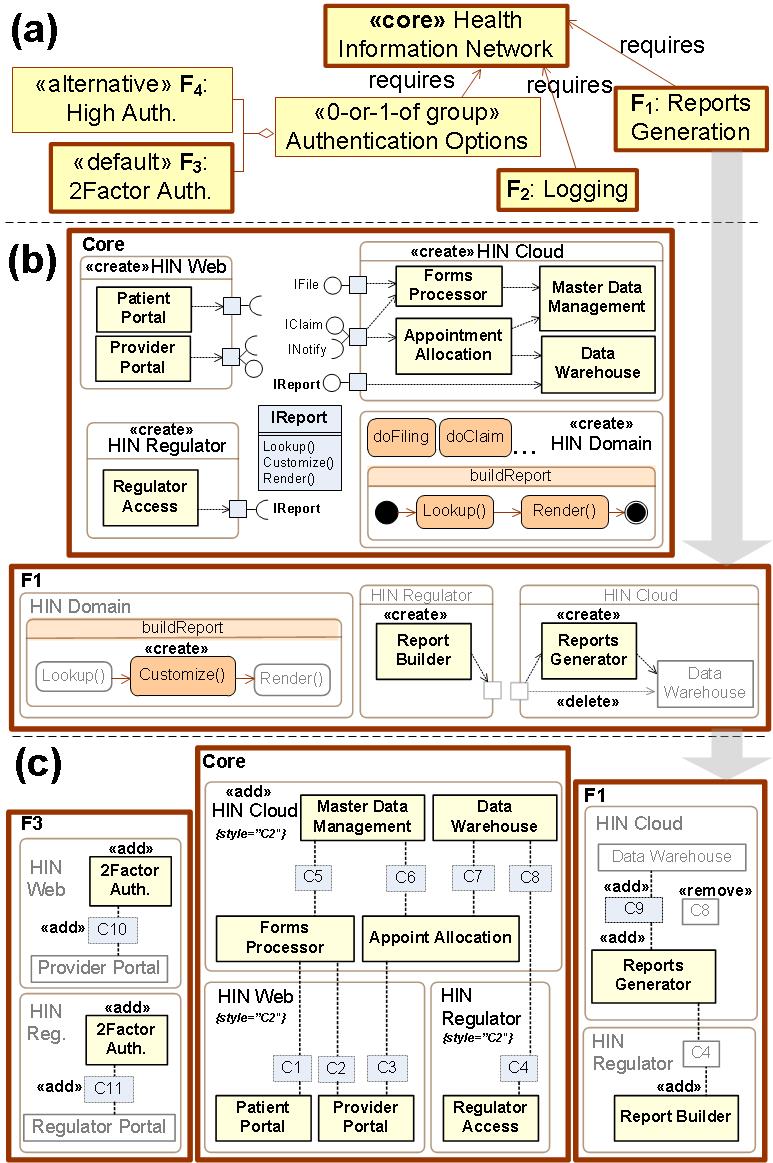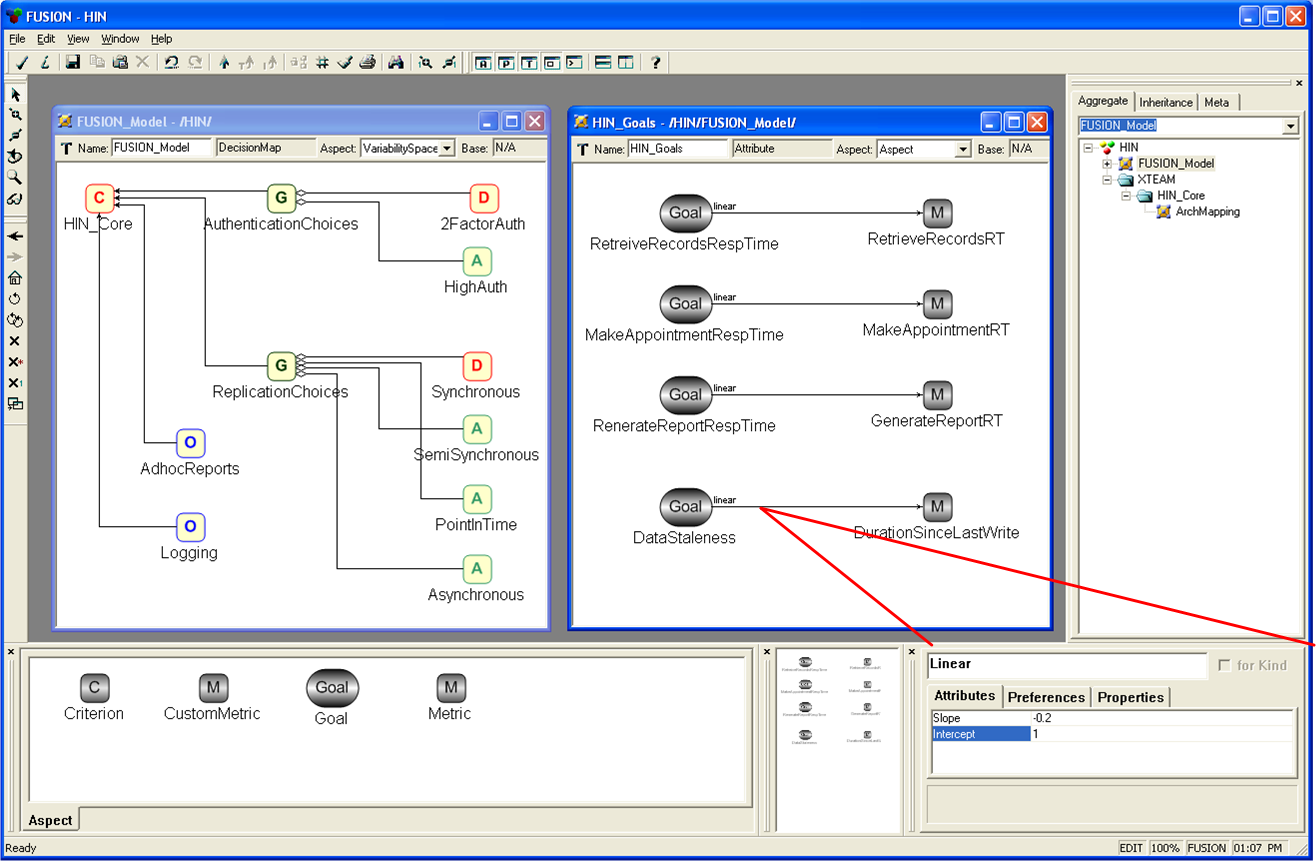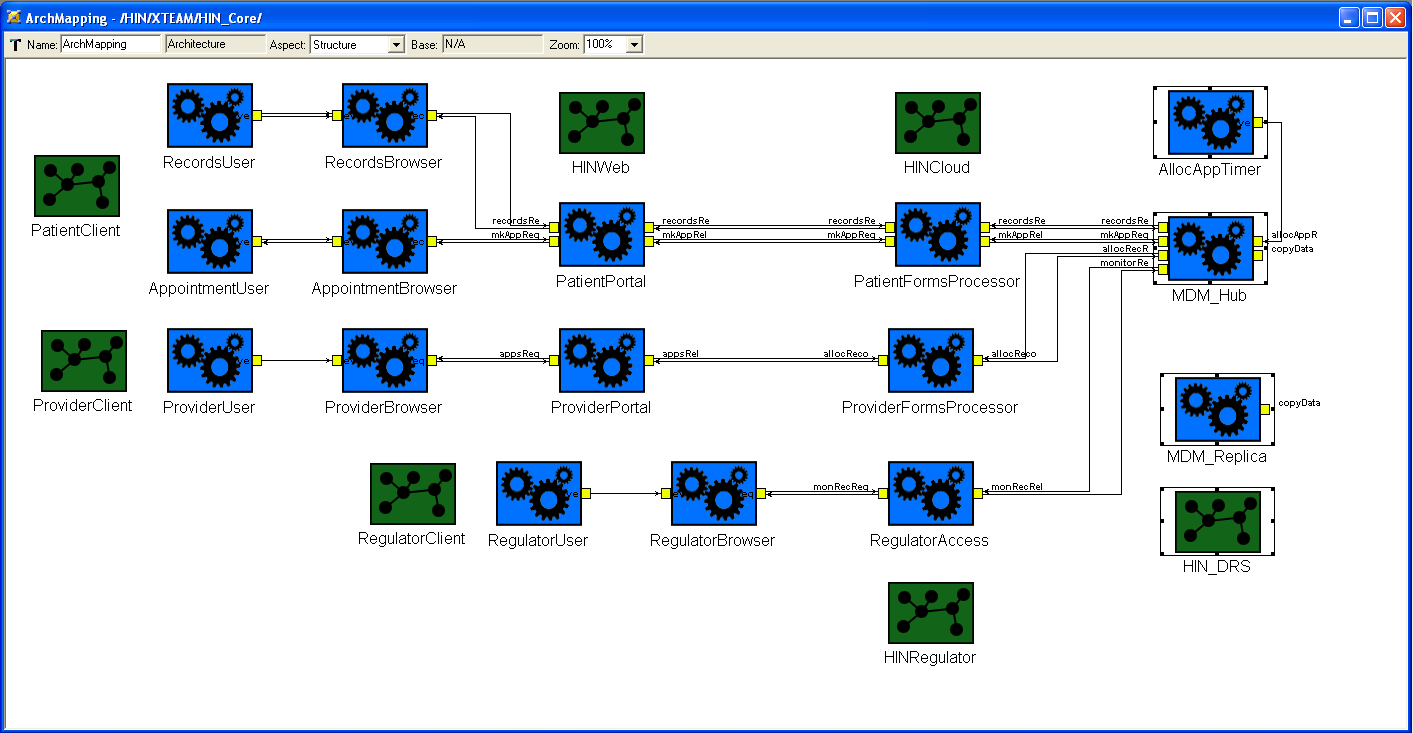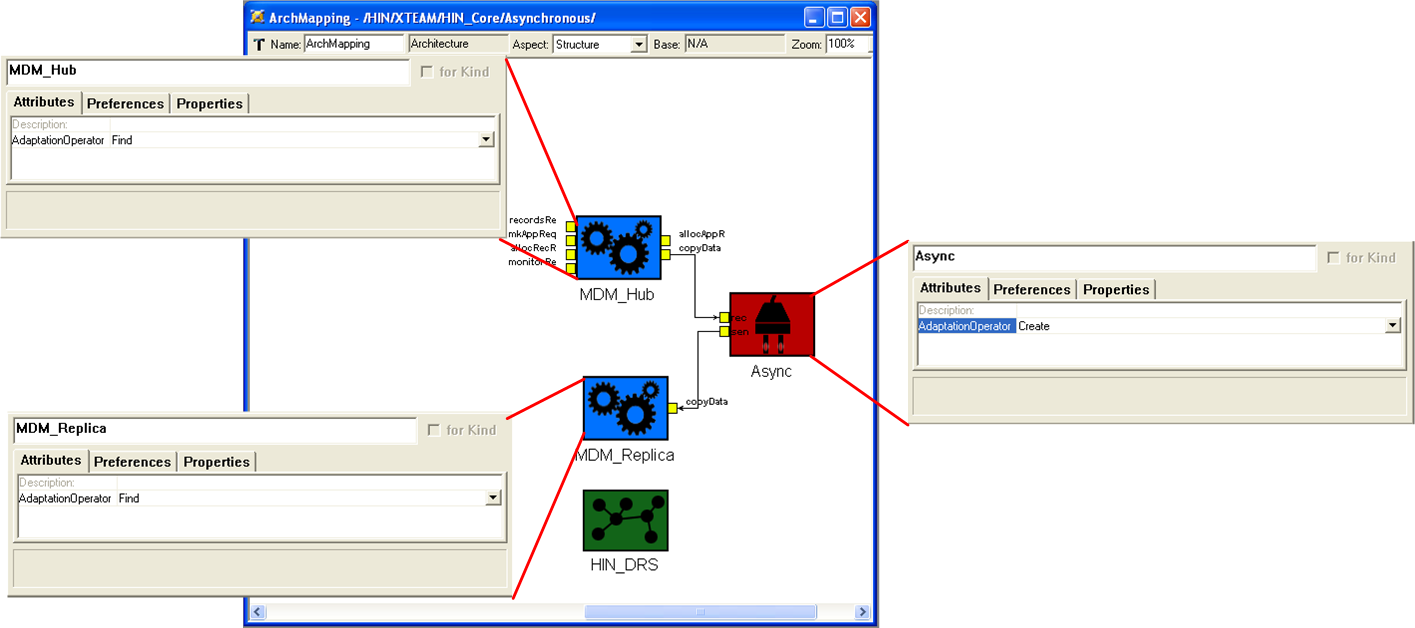Health Information Network
The online Health Information Network (HIN) is a representative of a web application used by patients, health providers, and government regulators as a national system for managing and exchanging health records in accordance with HIPAA standards. HIN needs self-adaptation capabilities to balance a number of goals. The figure below shows a subset of HIN's software system using the traditional component-and-connector view (part c). The system consists of three distributed nodes (i.e. HIN Web, HIN Regulator, and HIN Cloud) that have been constructed internally using the C2 architectural style.

Health Information Network (HIN): Component and Connector View.
Use Cases
HIN has three key actors that initiate interaction with the system (i.e., Patient, Health Service Providers, and Regulators). The following is a high level overview of the main business use cases of the system:
- Retrieve Records: Using the HIN system, a patient can access his/her country-wide health records. The process allows for search by date, type of indecent, and so on.
- Make Appointment: Patients can make appointment requests with health providers. Appointment requests defer based on type of illness requested and patient's record of treatments. For instance, HIN gives priory to placing a patient to the health provider, with whom the patient had received treatment earlier. However, if the illness is of an emergency nature, the system places the patient with the health provider that has the closest availability.
- Place Appointment: Periodically, an Appointment Allocation component fetches patients' appointment requests and matches them with a HIN health provider. HIN health providers can then retrieve appointments that have been placed to them using a dedicated Portal. Based on the type of illness, a subset of the patients' information is forwarded to the health provider. To privacy purposes, a pairwise evidence of the forwarded information is tracked so that regulators can govern and monitor HIPAA compliance in case legal disputes arise.
- Monitor HIN: The regulators may also run other intelligent reports using Report Generator and Report Builder to monitor other nation-wide trends by enabling F1. Enabling F3 can also extend the system by providing 2FactorAuth. to increase security in dealing with both Portals.
FUSION Model
The figure below depicts the FUSION Model of HIN using the editor. The model is comprised of two main aspects 1) Feature Model and 2) Goal Model.
Models can be downloaded from here.

FUSION Model of the HIN: (left) Feature Model (right) Goal Model
Feature Mapping to Software Architecture
Below figure depicts how Asynchronous replication feature. The feature adds one connector (i.e., Sync) to the system. The new connector intercepts all communication between the components: MDM_Hub and MDM_Replica. FUSION uses adaptation operators (i.e., <<Create>> and <<Find>>), as a means to describe change management logic for the running system.


Feature Mapping to the Software Architecture: (top) Core Architecture of HIN, (south) Asynchronous Replication Feature.
![[seal's logo]](../../seal.png)
![[uci's logo]](../../uci.jpg)